#StolenMemory: A wedding ring helps to heal trauma
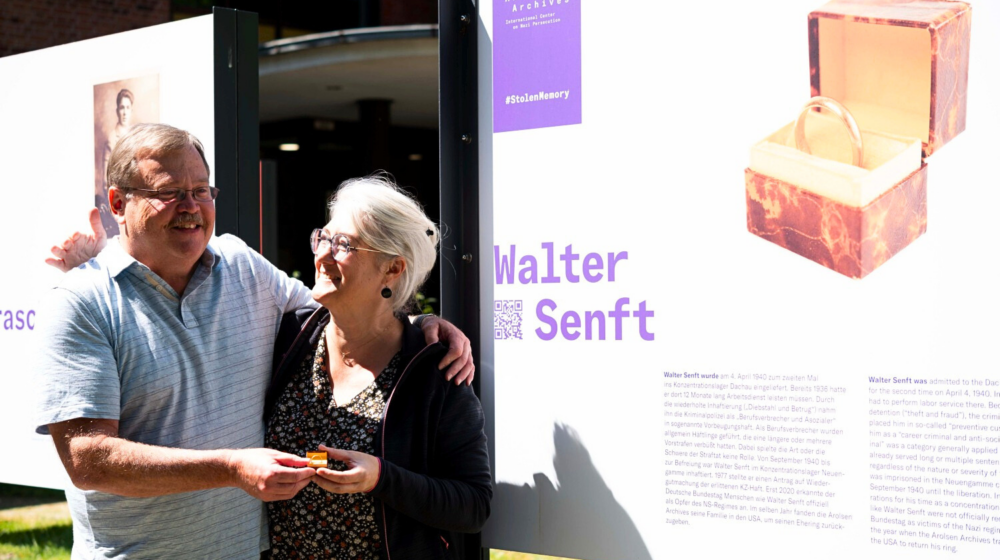
“I didn’t even know she existed or that my grandpa had such a big family.” Until recently, Patrick May was not aware of his second cousin Catherine Guebey-Robert’s existence. In June 2023, the U.S. American and the Frenchwoman met for the first time – united as a result of research the Arolsen Archives did on Patrick’s grandfather, Walter Senft.
Patrick and Catherine traveled with their relatives to Bad Arolsen to receive Walter’s wedding ring in person. The Nazis stole the ring from him when they interned him at the Dachau concentration camp in April 1940.
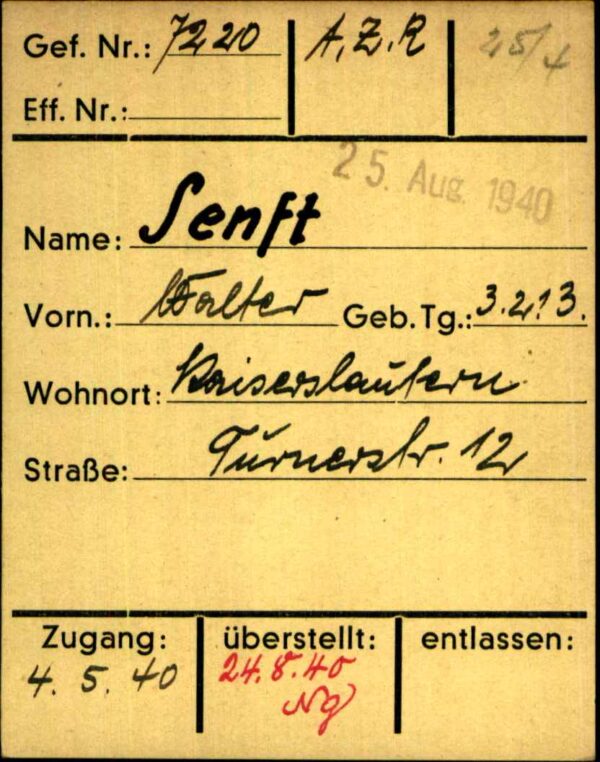
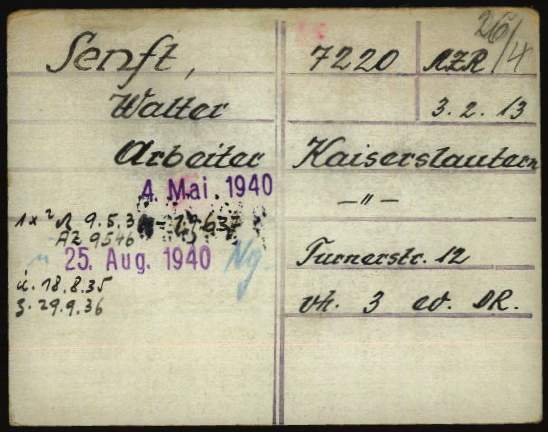
Official recognition as a victim of the Nazi regime
In 1936 already, he had to do 12 months of labor service in Dachau. In 1940, the criminal police took him into so-called protective custody for theft and fraud, stigmatizing him as a “career criminal and an anti-social element”. “Career criminal” was a category generally applied to prisoners who had already served long or multiple sentences for prior convictions, regardless of the nature or severity of their crimes. From September 1940 until liberation, Walter Senft was imprisoned in the Neuengamme concentration camp . In 1977, he filed an application for compensation for the concentration camp imprisonment he had suffered. It was not until 2020, though, that the German Parliament officially recognized people like Walter Senft as victims of the Nazi regime.
Learning more about their family history and now getting to know each other better is a particularly emotional experience for Patrick, Catherine, and their families. “When we started our search for traces of Walter in parallel a few years ago, neither of us knew of the other’s existence,” Patrick says.
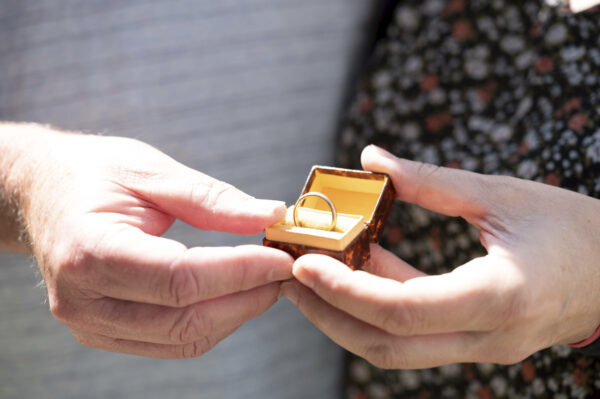
Patrick and Catherine hold Walter’s wedding ring.
Living on as Germans after the war
It was only through stories told by her grandmother that Catherine knew her grandmother had a little brother called Walter. He was thought to have died during World War II, but his family never received clarity about his fate. While getting to know each other, the two found parallels in their biographies: During the war years, Catherine’s grandmother Emma, Walter’s sister, fell in love with a French prisoner of war who had to remain in Germany as a civilian forced laborer later. When she became pregnant by him, the National Socialists imprisoned him. After the war ended, the two of them lived in France with their young daughter, Catherine’s mother. Emma had a difficult start there, though, as she encountered much prejudice because of her German nationality.
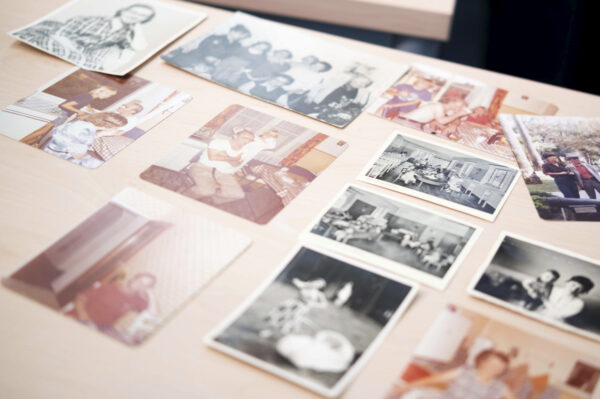
Family photos by Patrick May.
Rosemarie, Patrick’s mother, also had a hard time putting the traumatizing experiences of the Nazi era behind her. When she was born in 1936, the National Socialists had already imprisoned her father Walter in the Dachau concentration camp. At that time, her siblings Renate and Reinhold were already in a children’s home in Kaiserslautern, where Rosemarie also grew up from the age of two. She was not allowed to live with her mother again and meet her father until fourteen years later. In her early 20s, she married an U.S. American soldier stationed in Kaiserlautern and lived in the U.S. from then on. Although herself a victim of the Nazis, she had to face similar reservations towards Germans as had Catherine’s mother and grandmother.
Transgenerational trauma
“It took me and my siblings a long time to forgive my mother because she had never learned to be a mother. That my grandfather was persecuted by the Nazis and that she grew up in a children’s home because of that, is something that never let her go,” explained Patrick, describing the behavior of his mother.
The return of Walter’s wedding ring means a new beginning for the families. They hope to heal old wounds and find a way to handle transgenerational trauma.
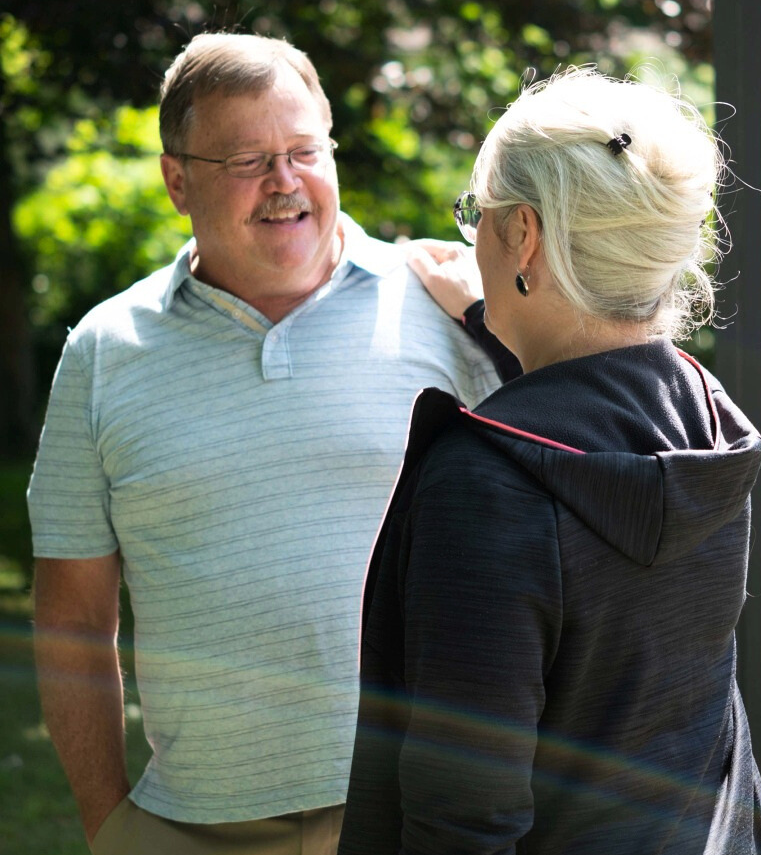
«The circle of our family was destroyed at that time, so may be the return of Walter’s ring can now help to close that circle again.»
Patrick May, Grandson of Walter Senft
About 2,500 personal items belonging to former concentration camp prisoners are still in storage at the Arolsen Archives. The #StolenMemory campaign allows volunteers worldwide to participate in the search for their owners’ loved ones.

